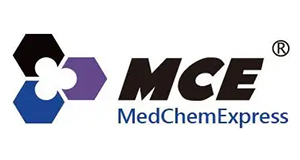Flibanserin (hydrochloride) (propan-2-ol) (hydrate)
Flibanserin (hydrochloride) (propan-2-ol) (hydrate)
SKU
MEXHY-A0095A-10
Packaging Unit
10 mg
Manufacturer
MedChemExpress
Availability:
loading...
Price is loading...
Product Description: Flibanserin (hydrochloride) (propan-2-ol) (hydrate) (BIMT-17 (hydrochloride) (propan-2-ol) (hydrate); BIMT-17BS (hydrochloride) (propan-2-ol) (hydrate))is an orally active serotonin 5-HT1A receptor agonist and 5-HT2A receptor antagonist with Ki values of 1 nM and 49 nM, respectively. Flibanserin hydrochloride binds to dopamine D4 receptors with an Ki value of 4-24 nM. Flibanserin hydrochloride shows anti-depression and anti-anxiety effect, can be used to hypoactive sexual desire disorder (HSDD) research[1]-[5].
Applications: Cancer-programmed cell death
Formula: C20H22ClF3N4O.0.5C3H8O.0.5H2O
References: [1]Fayed M, et al. Insights into Flibanserin Oxidative Stress Degradation Pathway: In Silico – In Vitro Toxicity Assessment of Its Degradates[J]. New Journal of Chemistry, 2021. /[2]Invernizzi RW, et al. A potential antidepressant drug, lowers 5-HT and raises dopamine and noradrenaline in the rat prefrontal cortex dialysate: role of 5-HT(1A) receptors. Br J Pharmacol. 2003 Aug;139(7):1281-8. /[3]Gelez H, et al. Brain neuronal activation induced by flibanserin treatment in female rats. Psychopharmacology (Berl). 2013 Dec;230(4):639-52. /[4]Podhorna J, et al. Flibanserin has anxiolytic effects without locomotor side effects in the infant rat ultrasonic vocalization model of anxiety. Br J Pharmacol. 2000 Jun;130(4):739-46. /[5]Gelman F, et al. Flibanserin for hypoactive sexual desire disorder: place in therapy. Ther Adv Chronic Dis. 2017 Jan;8(1):16-25.
Molecular Weight: 465.20
Compound Purity: 99.96
Research Area: Cancer; Neurological Disease
Solubility: 10 mM in DMSO
Target: 5-HT Receptor
Applications: Cancer-programmed cell death
Formula: C20H22ClF3N4O.0.5C3H8O.0.5H2O
References: [1]Fayed M, et al. Insights into Flibanserin Oxidative Stress Degradation Pathway: In Silico – In Vitro Toxicity Assessment of Its Degradates[J]. New Journal of Chemistry, 2021. /[2]Invernizzi RW, et al. A potential antidepressant drug, lowers 5-HT and raises dopamine and noradrenaline in the rat prefrontal cortex dialysate: role of 5-HT(1A) receptors. Br J Pharmacol. 2003 Aug;139(7):1281-8. /[3]Gelez H, et al. Brain neuronal activation induced by flibanserin treatment in female rats. Psychopharmacology (Berl). 2013 Dec;230(4):639-52. /[4]Podhorna J, et al. Flibanserin has anxiolytic effects without locomotor side effects in the infant rat ultrasonic vocalization model of anxiety. Br J Pharmacol. 2000 Jun;130(4):739-46. /[5]Gelman F, et al. Flibanserin for hypoactive sexual desire disorder: place in therapy. Ther Adv Chronic Dis. 2017 Jan;8(1):16-25.
Molecular Weight: 465.20
Compound Purity: 99.96
Research Area: Cancer; Neurological Disease
Solubility: 10 mM in DMSO
Target: 5-HT Receptor

 Deutsch
Deutsch









